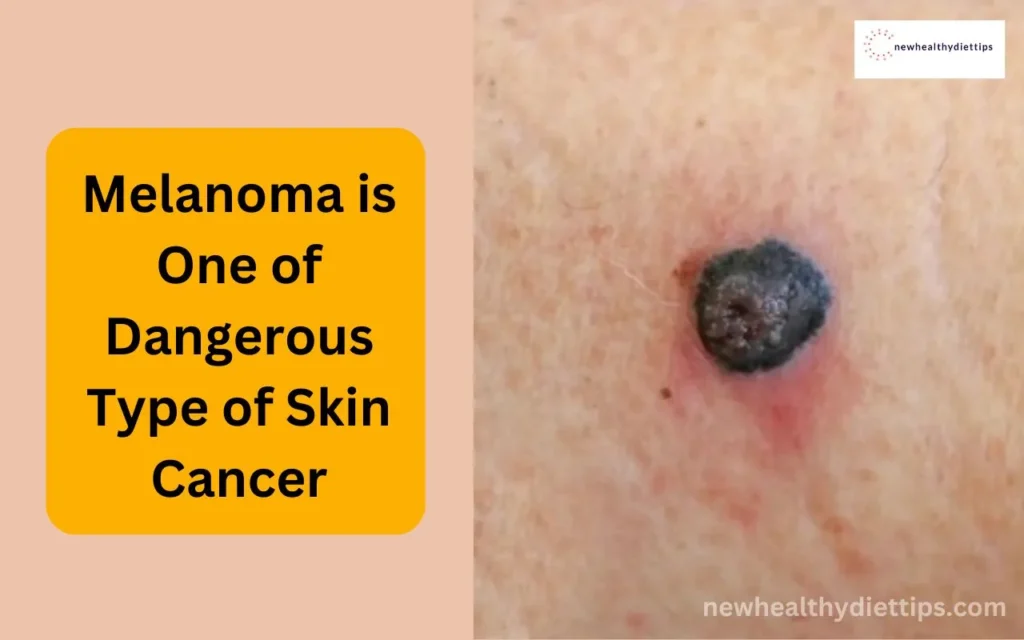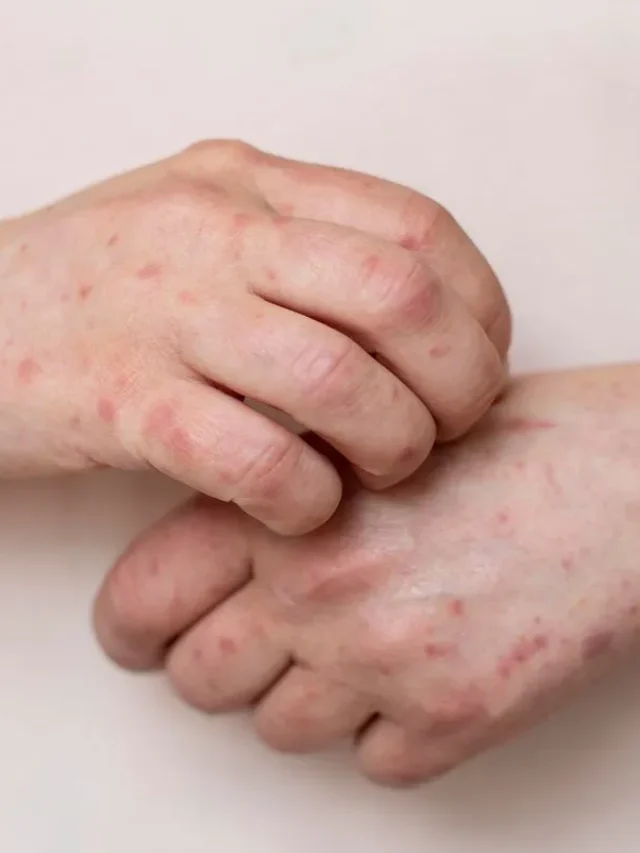Have you ever worried if a new or changing mole on your skin is cancer? We rarely think about monitoring our skin, but Melanoma, the most dangerous form of skin cancer, is rising. Don’t panic—know how to detect the early indicators. This article will explain Melanoblastoma, what to look for, and how to examine your skin to spot problems early. Early-detected melanoblastoma therapy options will also be discussed. Let’s begin so you may feel empowered to defend your skin!
How Serious is Melanoma?
The most serious skin cancer is Melanoblastoma. It spreads quickly and is deadly if left untreated, unlike basal cell carcinoma or squamous cell carcinoma.
It can spread rapidly.
Melanocytes, which produce melanin, cause melanocarcinoma. Melanoma cells can extend beyond the skin to lymph nodes, organs, and other places. Melanoblastoma is complex and cannot be cured once it spreads.
Early detection matters.
Early detection and removal can cure Melanoblastoma You should self-examine your skin often for new or changing moles, lesions, or blemishes. Contact a dermatologist immediately if you suspect anything. Based on its stage, they can evaluate, biopsy, and treat the Melanoblastoma.
Treatments vary by stage.
Surgery, chemotherapy, radiation, immunotherapy, and targeted therapy are available. Minor surgery to remove early-stage melanomas often works. Advanced instances may need multiple treatments to stop the cancer from spreading. Post-treatment Melanoblastoma monitoring and care are always required.
Understanding how deadly Melanoblastoma is and actively participating in early detection and prevention will help lower risks and catch it early. Observe skin changes and get regular skin checks to safeguard your life.
In this moment, you are whole, you are enough, and you are loved. 💫 Embrace the stillness within and let it guide you towards a deeper sense of peace and harmony. 🌸 pic.twitter.com/zIWJnfQzRM
— newhealthydiettips (@newhealthy96941) February 7, 2024
What is The Survival Rate For Melanoblastoma?
Early detection and advanced treatments have improved Melanoblastoma survival rates. Recent studies show a 99% 5-year survival rate for early-detected Melanoma. As the cancer spreads further into the skin or body, survival rates fall.
Stage 0 or I
When Melanoblastoma is identified early in the top layer of skin, the 5-year survival rate is nearly 100%. Stage I, where the tumour is less than 1 millimeter deep, has a 95% 5-year survival rate. Regular self-exams and skin checks help detect it early.
Stage II or III
Depending on variables, Melanoblastoma survival rates drop to 65–85% over 5 years as it spreads deeper into the skin or lymph nodes. Surgery to remove the tumour is usually followed by radiation or chemotherapy. These stages require close monitoring and follow-up after treatment.
Stage IV
Melanoma‘s 5-year survival rate declines to 25% when it metastasizes. Stage IV treatments aim to slow cancer growth and prolong life. Although immunotherapies and targeted pharmacological therapies are improving results, stage IV Melanoblastoma is still tough to treat.
Early detection and removal can cure Melanoblastoma. Get to know your skin, self-examine, and consult your doctor immediately if you discover suspicious moles or changes. Early detection and treatment save lives with this malignancy. Be attentive and inspect your skin regularly.
What Does a Stage 1 Melanoma Look Like?
Early Melanoblastoma detection is crucial. At Stage 1, the cancer is limited to the upper skin layers and has not spread. An atypical mole or skin development is typical with Stage 1 Melanoblastoma.
Asymmetrical shape
Most moles are round or oval. However, Melanoblastomas are irregular and asymmetrical. Borders may be jagged or fuzzy.
Border problems
The margins of early Melanoblastomas are generally ragged or fuzzy. Moles with smooth margins are normal.
Variations in colour
Many Melanoblastomas have many brown, black, red, white, or blue hues. Brown benign moles are usually one color. Uneven mole pigmentation might be dangerous.
Diameter above 6mm
It can be smaller, but most doctors recommend monitoring or removing worrisome lesions larger than 6 millimeters. Oversize is another warning indication.
Evolution
Any mole that changes size, shape, or color should be seen by a dermatologist immediately. A history of change is a key indicator of a malignant mole. Early detection of curable Melanoblastoma can save your life.
The warning signs—Asymmetry, Border irregularities, Colour variations, Diameter above 6mm, and Evolution—and regular skin self-exams can help you diagnose Stage 1 melanoma. Consult your dermatologist immediately if you find suspicious moles or skin changes. Its treatment and survival are optimal with early detection.
Symptoms And Treatment of Melanoblastoma
The most serious skin cancer is Melanoblastoma. It is often curable if diagnosed early. Know the symptoms and treatment.
Watch for sign
Some warning indicators represent the most prevalent Melanoblastoma symptoms:
The mole or spot is asymmetrical. The two halves of Melanoblastoma are often different.
Border: Uneven, ragged, or fuzzy. Borders of benign moles are smooth.
The mole is black, brown, and tan. It can be red or blue.
Some Melanoblastomas are less than 6 millimeters (about the size of a pencil pad).
The mole has risen or changed over weeks or months. Stable benign moles persist.
Options for treatment
Treatment for Melanoblastoma depends on the stage. Minor surgery to remove the tumor and a margin of healthy tissue can treat early-stage Melanoblastoma. Advanced treatment options include surgery to remove lymph nodes and tumors. Immunotherapy or chemotherapy may follow.
Immunotherapy fights cancer with your immune system. Ipilimumab, nivolumab, and pembrolizumab increase Melanoblastoma cell immunity.
Targeted treatment medications target Melanoblastoma cell mutations. Vemurafenib, dabrafenib, and trametinib inhibit the BRAF mutation in Melanoblastoma.
Its cells are killed by chemotherapy. Its treatment often includes dacarbazine and temozolomide.
High-energy radiation beams attack cancer cells. This treatment can be used to eliminate any leftover Melanoblastoma cells following surgery. Clinical trials provide access to promising new medicines under development. Consult your doctor about clinical trials.
It is often curable with early identification and treatment. Examine your skin regularly and see a dermatologist. Together, you can defeat this sickness.
Conclusion
Melanoma is serious. Most moles are innocuous, but knowing the indications of this fatal skin cancer and catching it early are key. Avoiding tanning beds, monthly skin checks and SPF are crucial to prevention. If you see a suspicious mole, see a dermatologist immediately. Life may depend on it. Be diligent and safeguard your wonderful skin. Indeed, it covers your complete body! Awareness and preventative care can reduce risk and overcome the odds and also read out about Explain How Poor Physical Health May Affect Your Social Health.
Our Services include the best healthy eating habits, nutrition guides, diet, nutrition plans and newsdailytime.
FAQs
Can 100% cure Melanoblastoma?
Early-stage Melanoblastoma under one millimeter can be entirely removed surgically or excisionally in the office. “Ninety-six percent of early-stage Melanoblastoma are cured with simple surgery,” says Doctor Leffell.
Can Melanoblastoma heal naturally?
It can naturally disappear. Skin Melanoblastoma might recur without therapy. The body’s immune system might vigorously attack the disease, forcing its retreat.
Will Melanoblastoma kill?
Melanoblastoma is the deadliest invasive skin cancer. Early detection makes this dangerous skin cancer treatable. Prevention and early treatment are essential if you have fair complexion, blonde or red hair, and blue eyes.
What were your initial Melanoblastoma symptoms?
Changes in mole or skin lesion size, shape, color, or feel often detect Melanoblastoma. A skin lesion is a distinct skin region. Melanoblastoma may show as a new or odd mole or lesion.
How long does Melanoma usually survive?
The 5-year relative survival rate in the US is 99% for “thin Melanoblastoma,” defined as less than 1 millimeter in maximal thickness that has not migrated to lymph nodes or other locations. The 5-year relative survival rate may be 80% or more with thicker Melanoblastoma.


